13 Types of Stoves to Suit Your Kitchen & Cooking Style
Author: Anne Cowart | Editor: Omar Alonso
Review & Research: Jen Worst & Chris Miller
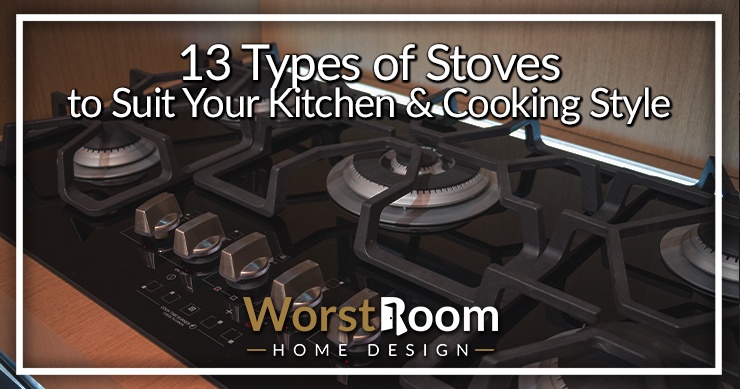
Various types of stoves don’t just make a great addition to any kitchen—they’re a necessity. Stoves have come a long way from being open fires in the days of our ancestors to handy contraptions that let you sear, roast, toast, bake, boil, steam—the possibilities are nearly endless.
Fortunately or unfortunately, though, this also means that there are nearly just as many stove types, making life a little complicated.
13 Types of Stoves
If you’re looking to get one of these appliances but the different types of stoves have you confused, here’s all that you need to know about these wonderful tools.
Gas Stove
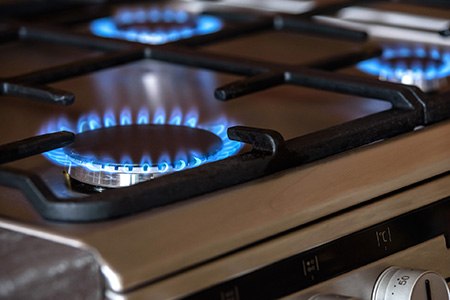
Let’s launch the list with the most obvious and traditional types of stoves—gas stoves. As the name suggests, these stoves are fueled by liquid propane or natural gas.
Compared to their electric counterparts, gas stoves can turn out to be quite expensive, featuring their own unique burners to accommodate a range of temperatures and thereby, cooking techniques, such as searing and boiling to simmering.
However, the fuel is less expensive than electricity, so it works out to be financially viable in the long run. Gas stoves are great because they heat up incredibly fast, providing nearly instant heat with their powerful flames.
They also offer the user more control over the temperature, letting you quickly increase or decrease it. This means more precise cooking and more importantly, no fear of burning a meal that you put all your heart, soul and effort into.
Gas stoves cool down just as fast as they heat, so you don’t have to worry about a post-cooking burn accident or the kids and the cat accidentally burning themselves.
Additionally, gas stoves are extremely versatile since they let you use any cookware you wish on them, without the fear of damage.
Modern gas stoves come equipped with safety systems to protect against gas leaks. Some others are also fitted with electric ignition systems to make the cooking process simpler.
For a gas stove, you’ll need a gas line. Ensure that your kitchen is well ventilated so there’s no danger from any fumes left post-cooking.
Multi-Functional Stove
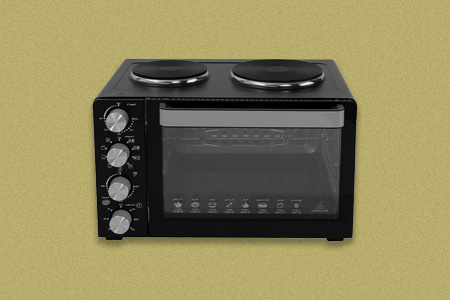
As the name suggests, these stove types are a wholesome package—different functions of cooking get combined into one very efficient unit. With such stoves, you can cook, boil, heat, bake and smoke food.
Different brands offer different features and combinations of features—some even feature in-built open types of fireplaces—so finding one that exactly fits your preferences is not a Herculean task.
Induction Stove
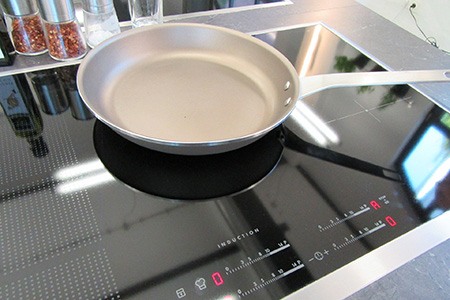
While gas stoves are pretty great at heating up fast, they don’t come close to induction types of stoves. These guys could rival a Ferrari in their zero to hundred, but this also means that you’re paying quite the premium for the stove and its benefits.
One of the biggest draws of an induction stove is that instead of the entire surface heating up, as is the case with electric and gas stoves, the heat remains restricted to one area and gets transferred directly to the vessel on the stove.
Once whatever types of pots are removed, the heating stops too. However, the biggest drawback with an induction stove is that you need to use pots and pans that are designed specifically for these induction stoves.
This adds to the already expensive price tag that an induction stove carries. The stove also tends to buzz and click at extremely high settings, but this can be remedied by using heavy cookware.
Electric Stove
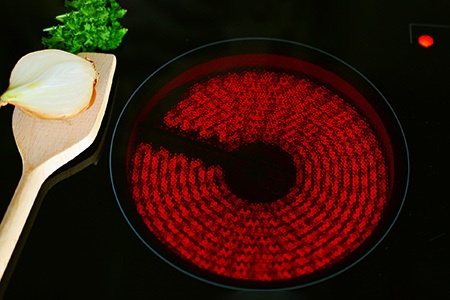
Electric stoves may be eco-friendly and convenient, but they’re less controllable than traditional gas stoves, despite their decently quick heating time.
But when you’re looking to simmer something for a long time without risking burning the food, an electric stove is your best bet. The glass tops offer convenient cleaning, though after time you'll need to remove the cloudiness from the glass top and scrape off some gunk. It's easy though.
Electric stoves are popular, easily available and also quite inexpensive, making them a great option for those on a budget. They’re also quite easy to clean, regardless of whether the stovetop features coils or is as smooth as a baby’s bottom.
You also don’t need an ignitor for such different types of stoves. The lack of an open flame makes them much safer, but as mentioned earlier, the heating time is much slower than a gas stove and adjusting the temperature is harder as these stoves are slower to respond.
Lastly, these stoves require electricity, so in the case of a blackout, you should have other alternatives planned. You may also have to use only specific cookware with some electric stoves, as the stovetop can get damaged or even shatter if you’re not careful.
Coil Stove
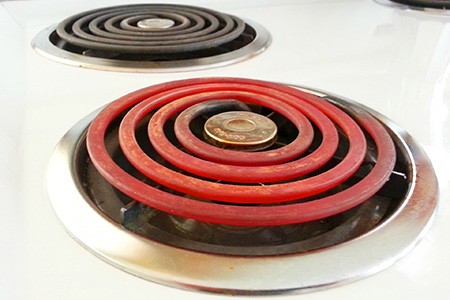
Coil stove types are a type of electric stress-free cooking setup and to further sweeten the deal, they’re incredibly durable (and hence, easy to scrub and clean) and affordable.
You can clean these with any home cleaner and you can also use any cookware on these cooktops, including cast-iron types of pans and not have to worry about damage.
Coil stovetops heat up quite quickly and stay hot for a long period, but there’s not too much possibility of controlling the temperature. Remember, if the connection of the coil to the power source gets loose, you may have a failed burner on your hands.
Smooth Stove
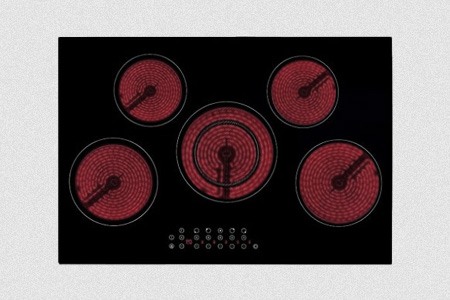
These smooth stoves are the answer to those who hate a hard stove to clean, with any burned or spilled food easily wiped off. These stoves are also known as ‘radiant cooktops’ and feature a smooth ceramic top. Ceramic is safe in the oven and on the stove top!
The heating elements under this ceramic top do a great job of heating without warming the air around the cooktop. Smooth stoves add a great aesthetic touch to the room, too, going extremely well with other modern decor.
However, these stoves are also relatively fragile and using the wrong kind of cookware can cause breakage or scratches.
Modular Stove
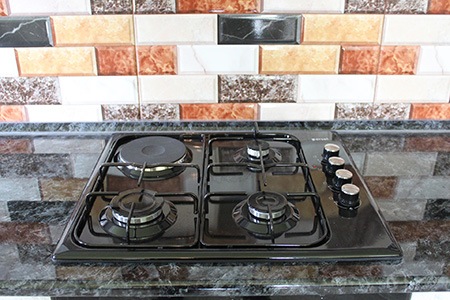
Modular types of stoves or cooktops combine both electricity and gas—the best of both worlds. These units are cohesive, featuring various types of ovens and both electric and gas burners on the stovetop.
With a modular stove in your kitchen, you won’t need to look any further for the perfect cooking area. From boiling to braising to stir frying, you can do it all at once on a modular stove.
Wood-Burning Stove
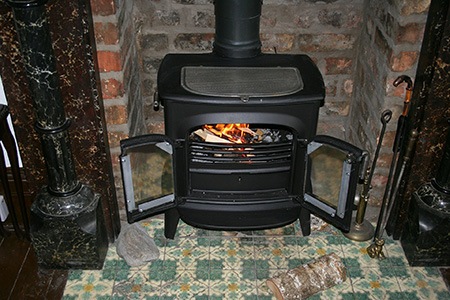
Wood-burning stoves are the simplest, using wood as the major source of fuel. These old-fashioned, charming stoves are still widely used in many regions of the world, especially in rural areas, for both cooking and heating purposes.
Wood-burning stove types generally feature all-metal construction, usually steel or cast iron. The advent of technology has made it possible to make these stoves energy efficient and allow them to burn clean, with EPA certification, while retaining their traditional design.
Pellet Stove
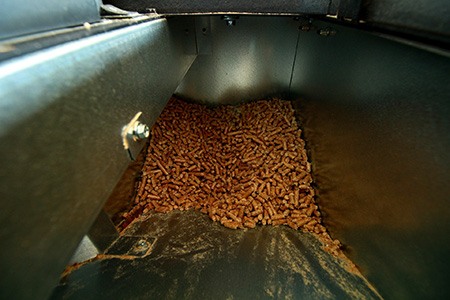
These stoves get their name from the fuel they use—pellets of wood (shaving and recycled sawdust) and other biomass material.
These burn cleaner than firewood, especially when made into compact pellets, which you need to put into a hopper—once you do this, the pellets are fed into a burn chamber to produce heat.
Though many folks use pellet stoves for heating purposes, the stove is designed for cooking. Pellet stoves can be quite expensive, even though the fuel isn’t.
Additionally, the fuel can leave behind quite a mess, so only get these different types of stoves if you’re ready to channel your inner neat freak.
Downdraft Stove
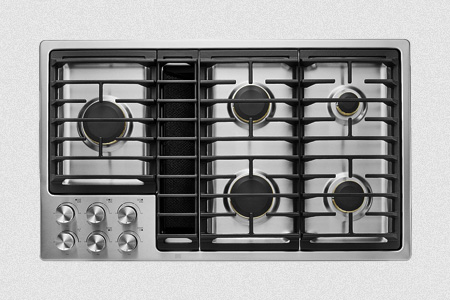
Downdraft stoves feature a ventilated system that’s installed using a small vent between the burners, directly on the cooktop’s surface, with exhaust types of fans installed on the cooktop itself, too, either on the side or behind the burners.
This is unlike electric and gas cooktops which feature overhead hoods that draw any smoke and heat emitted during cooking.
Downdraft extractor stoves are great for small kitchens where overhead hoods can’t fit or for those who like less bulky stoves that don’t come with large hoods that are troublesome to install.
However, downdraft types of stoves don’t have a very strong, efficient ventilation system, unlike traditional overhead hoods.
Stoves with Overhead Hoods
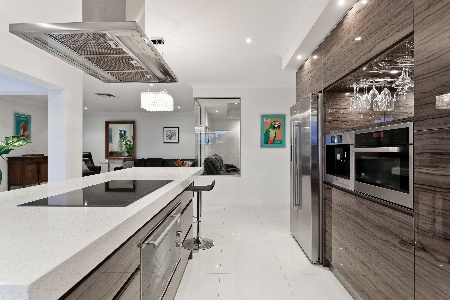
These stove types are exactly the opposite of downdraft stoves, featuring an overhead hood that sucks smoke and steam out of the kitchen, instead of letting the steam set off your fire alarm or create moisture problems. These hoods keep the kitchen air breathable and prevent your smoke alarm from randomly going off (or accidentally if you burn your food).
Stoves with overhead hoods are available in a range of different styles and sizes, so finding one to match the style of your kitchen and its decor shouldn’t be too much of a problem, whether you want it to stand out or blend in.
Stoves with Copper Burner
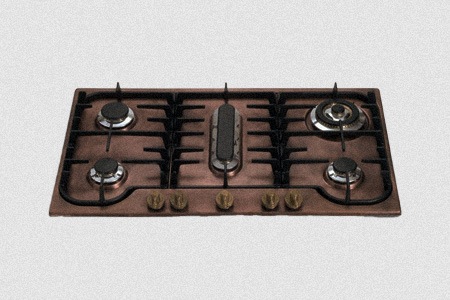
Stoves with copper burners are bought more for their aesthetic value than their functionality, though they have the latter in as much abundance as the former.
Copper burners add to your stove’s design while also working to diffuse the stovetop’s heat, ensuring that there’s a steady temperature for your cooking.
This makes copper burners ideal for cooking temperature-sensitive foods such as pasta or desserts or for simmering food. Remember that copper transfers heat faster than other metals, so ensure that you’re monitoring the food to prevent it from burning.
Portable Stove
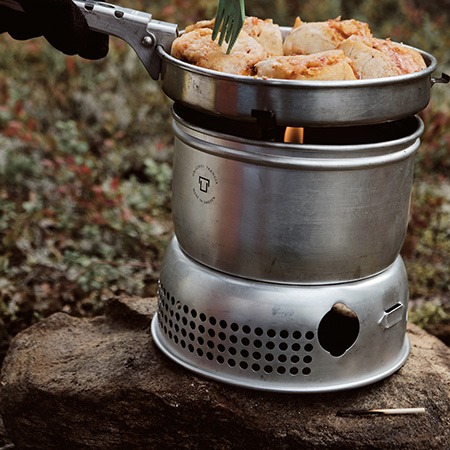
Not every stove is some permanent fixture in an indoor kitchen. There's portable options that can be taken on camping trips (as long as there's a power outlet or generator nearby). They typically come with one heating element though you can find ones with two elements, but not a whole kitchen range.
These oven alternatives still run off of electricity and demand 1,000 watts usually. The electric burners have safety shut-offs with thermal fuses in case there's any malfunctions.
Types of Stoves for Every Cooking Style
Stove types exist in many shapes and forms, with each form offering its own pros and cons to the user. Which one you pick majorly depends on your preferences, convenience and budget.
If you’re a beginner and are on a tight budget, an electric stove is a great idea and if you don’t mind shelling out the bucks, you could opt for a stove with copper burners. Ultimately, it matters what types of stoves you want. Happy cooking!




